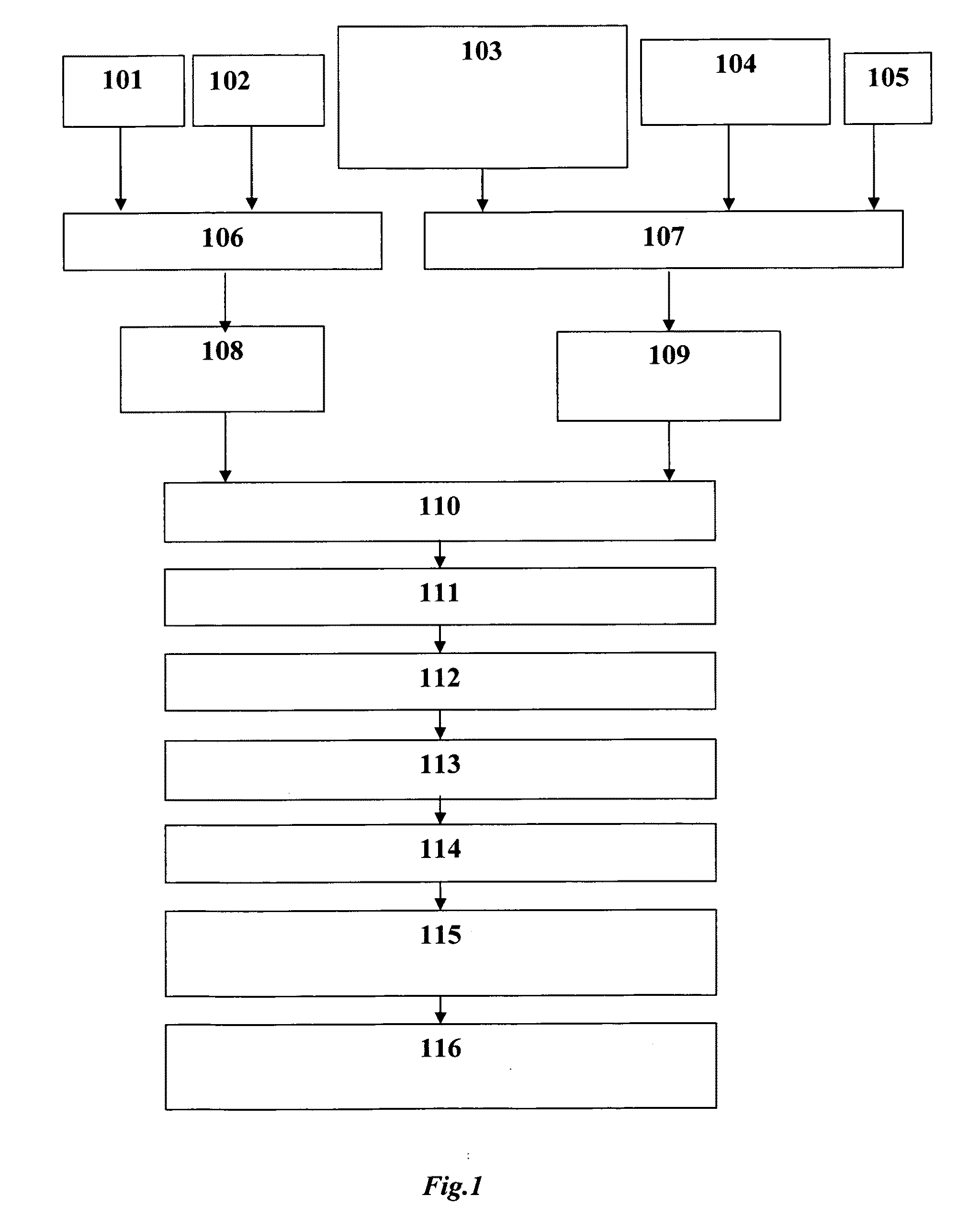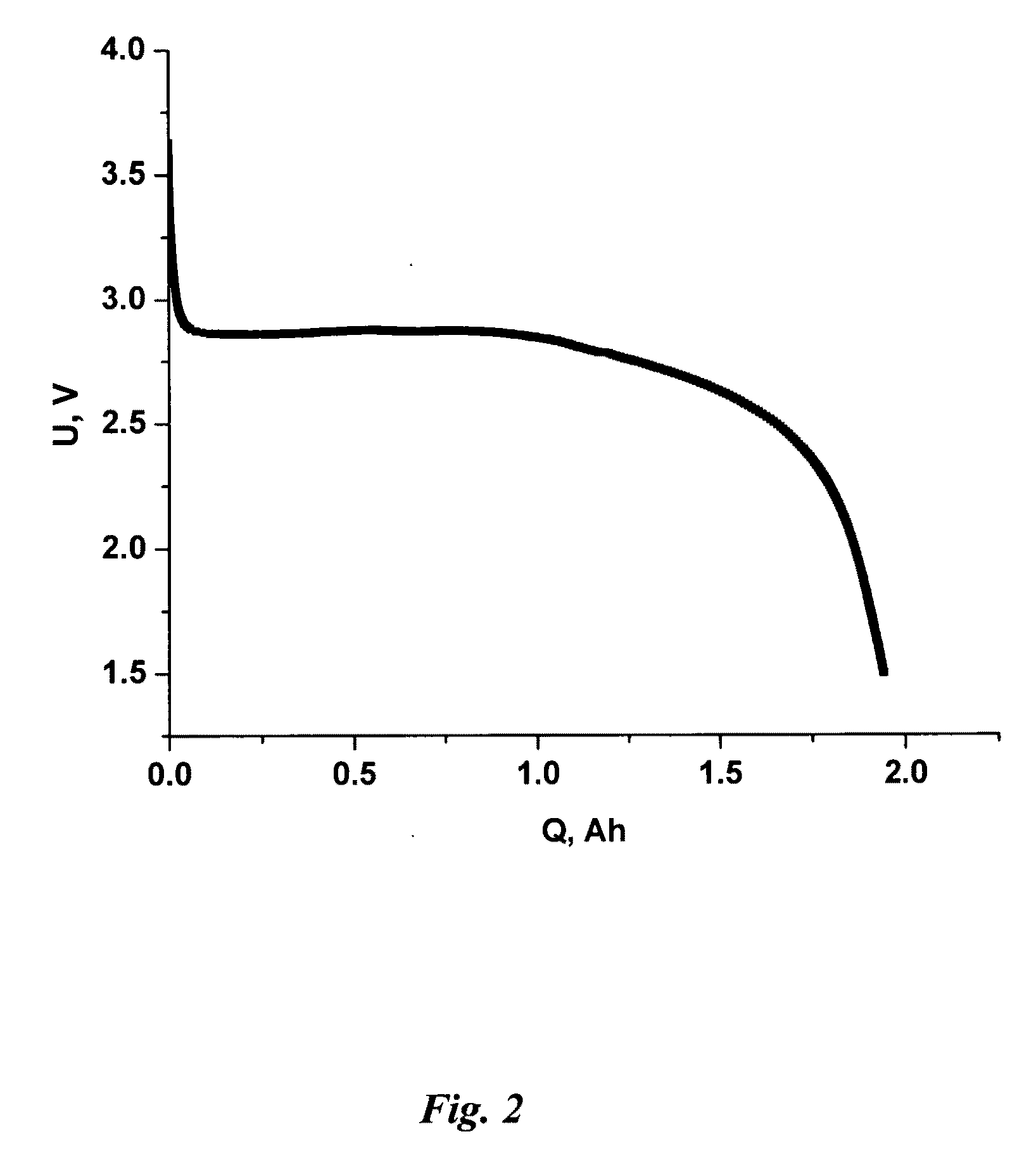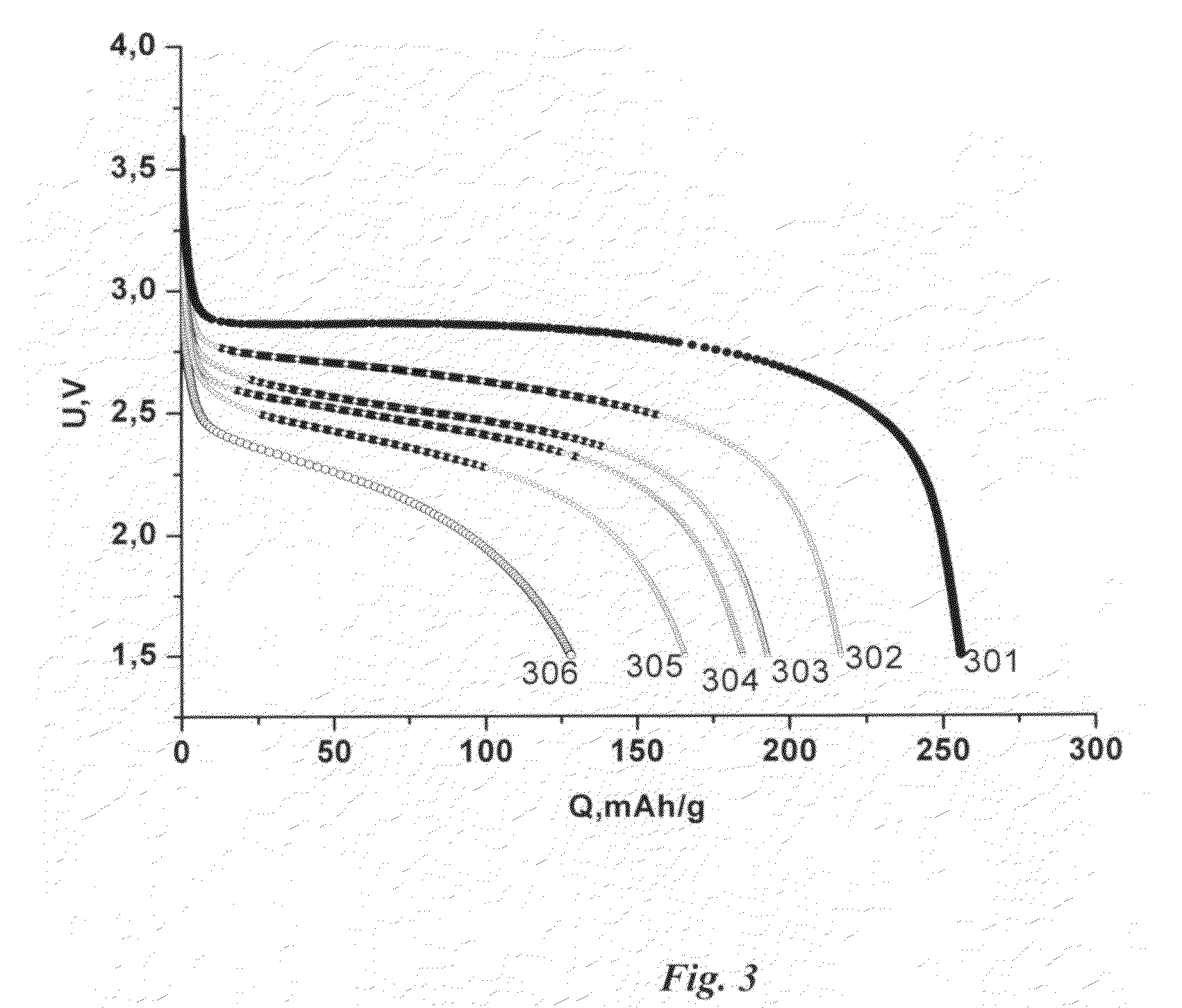Electrode for lithium primary and secondary (rechargeable) batteries and the method of its production
a lithium primary and secondary battery technology, applied in the manufacturing process of electrodes, non-aqueous electrolyte cells, cell components, etc., can solve the problems of difficulty in obtaining a homogeneous cathode mass, difficulty in producing thin coatings, and additional homogenization, etc., to achieve high efficiency, wide operating temperature range, and high power
- Summary
- Abstract
- Description
- Claims
- Application Information
AI Technical Summary
Benefits of technology
Problems solved by technology
Method used
Image
Examples
example 1
[0118]This Example is connected with cathode based on MnO2 as the active material. Cathode was produced by the method according invention.
[0119]Content of electrochemically active composition slurry are as follows:[0120]PVDF—homopolymer (Solef® 6020, Solvay): 2.0%[0121]PTFE, (Zonyl® MP 1100, DuPont): 1.5%[0122]MnO2 (CDM): 43.5%[0123]Graphite (ABG1005, Superior Graphite Co.): 1.0%[0124]Carbon black (Acetylene black AB55, Chevron Phillips Chemical Co.): 2.0%[0125]N,N-Dimethylacetamide (OMNISOLV): 50%
[0126]A blend of solid-phase components of MnO2, carbon black, graphite and PTFE was prepared by mixing for 5-6 hours using a ball-mixer.
[0127]An N,N-Dimethylacetamide solution of PVDF was made by using Lab mixer with a DL-attachment at 250 rpm for 3 hours with moderate heating up to 60° C.
[0128]A slurry of the electrochemically active composition was prepared in three stages using a VACUUM MIXER as follows:[0129]Mixing the PVDF solution with the solid-phase component blend. A Three Wing A...
example 2
[0135]This Example is a cathode based on MnO2 as the active material. The cathode was produced by the method of the present invention.
[0136]The electrochemically active slurry composition was composed as follows:[0137]PVDF—homopolymer (Solef® 6020, Solvay): 2.0%[0138]PTFE, (Zonyl® MP 1100, DuPont): 1.5%[0139]MnO2 (CDM): 42.5%[0140]Graphitized carbon black (SCD 315, Superior Graphite Co.): 4.0%[0141]N,N-Dimethylacetamide (OMNISOLV) solvent: 50%
[0142]Blending of the solid-phase components of MnO2, graphitized carbon black, and PTFE was prepared by mixing for 5-6 hours using a ball-mixer.
[0143]An N,N-Dimethylacetamide solution of PVDF was produced by using a Lab mixer with DL-attachment at 250 rpm for 3 hours with moderate heating up to 60° C.
[0144]A slurry of the electrochemically active composition was prepared in three stages using a VACUUM MIXER:[0145]The PVDF solution and solid-phase component blend were mixed. A Three Wing Anchor Agitator was used for mixing for 30 minutes at 20 ...
example 3
[0150]This Example describes fabrication of a cathode based on MnO2 as the active material. The cathode was produced by the method of the present invention.
[0151]The contents of electrochemically active composition slurry are as follows:[0152]PVDF—homopolymer (Solef® 6020, Solvay): 2.0%[0153]PTFE, (Zonyl® MP 1100, DuPont): 1.5%[0154]MnO2 (CDM): 42.5%[0155]Graphitized carbon black (SCD 315, Superior Graphite Co.): 4.0%[0156]N,N-Dimethylacetamide (OMNISOLV): 50%
[0157]Blending of the solid-phase components MnO2, graphitized carbon black and PTFE was carried out by mixing for 5-6 hours using a ball mill.
[0158]An N,N-Dimethylacetamide solution of PVDF was prepared using the Lab mixer with DL-attachment at 250 rpm for 1 hour with moderate heating up to 60° C. The slurry of the electrochemically active composition was prepared using a Lab mixer with an L-high-shear attachment with 8000 rpm for three 10-minute steps followed by periodic cooling. The slurry was applied to both sides of a 50 ...
PUM
 Login to View More
Login to View More Abstract
Description
Claims
Application Information
 Login to View More
Login to View More - R&D
- Intellectual Property
- Life Sciences
- Materials
- Tech Scout
- Unparalleled Data Quality
- Higher Quality Content
- 60% Fewer Hallucinations
Browse by: Latest US Patents, China's latest patents, Technical Efficacy Thesaurus, Application Domain, Technology Topic, Popular Technical Reports.
© 2025 PatSnap. All rights reserved.Legal|Privacy policy|Modern Slavery Act Transparency Statement|Sitemap|About US| Contact US: help@patsnap.com



